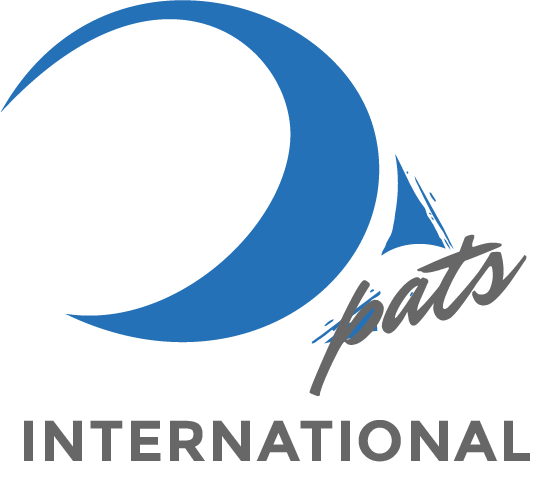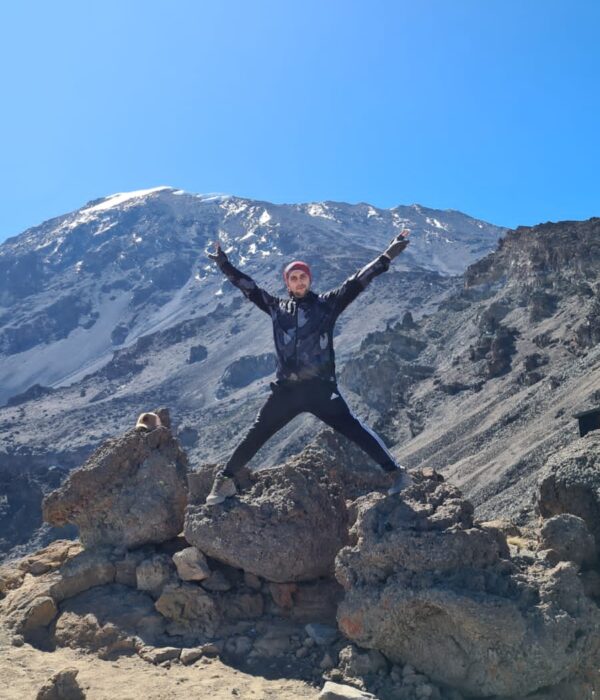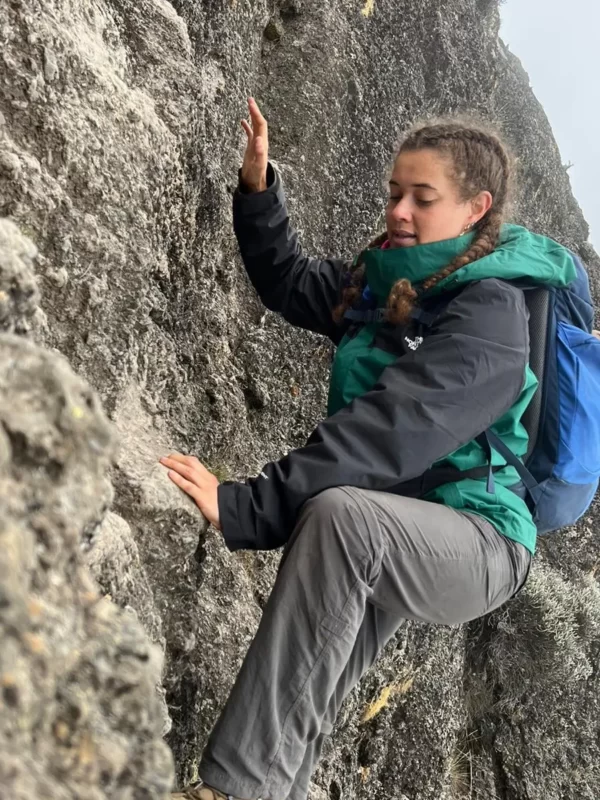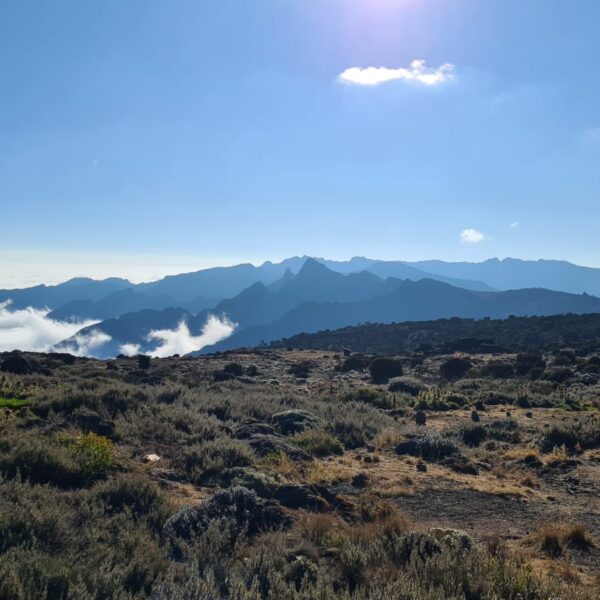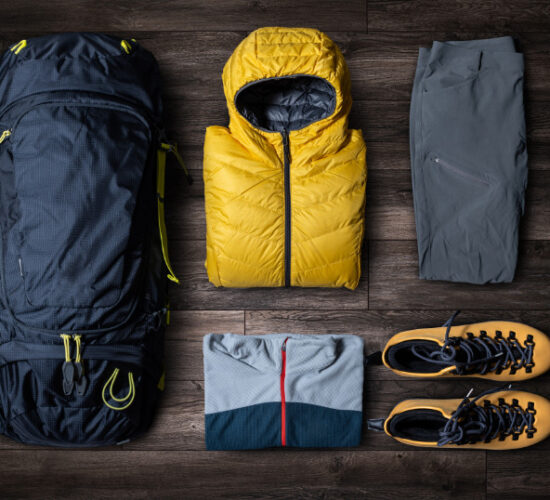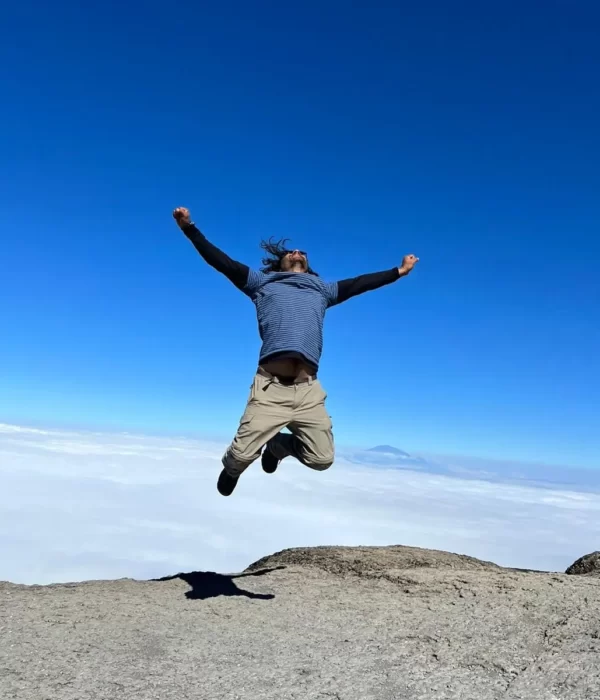The Western Breach is the most difficult and dangerous ascent path on Mount Kilimanjaro. The route is extremely steep and rocky, with deadly rockfalls occurring during high winds. Although you don’t need to become a rock climber in order to climb the Western Breach, mountain climbing experience is required or, at least, very strongly recommended to attempt this route. There is no single, well beaten path through the Western Breach compared to other ascent routes because the surroundings change all the time due to snow, ice shifts, and littered rocks.
What makes the Western Breach problematic is that the geography of the mountain puts climbers into a dangerous channel. The route sits on the western side of Kibo and is a gap to the summit that was formed hundreds of thousands of years ago by volcanic eruptions and lava flows from Kibo’s Crater. Tumbling rocks are funneled into this area and, while ice used to hold loose rocks in place, the mountain is continuing to go through a glacial retreat so, as time goes on, rockfalls are becoming more hazardous.
What Hiking Trails Lead To Kilimanjaro’s Western Breach Route?
- Lemosho — the Lemosho route has great acclimatization landscapes, beautiful scenic views and is generally easy underfoot. The route boast very high summit success rates, on its 8 day hiking variation, and is one of the best routes to approach the Western Breach. That’s because the duration spent acclimatizing at Lava Tower (4,600m) will later help you properly adjust when you are pushing toward the summit from Arrow Glacier camp (4,800m).
- Machame — the Machame route is the second best trail to approach the Western Breach because it shares similar landscapes as the Lemosho route. Expect a smooth and gradual climb until you arrive at Arrow Glacier camp.
- Umbwe — the Umbwe Route is the hardest route on Mount Kilimanjaro due to Its unkempt trails and poor acclimatization opportunities. This is the worst route to approach the Western Breach because there’s very little room for physical recovery and altitude adjustment.
- Shira — the Shira Route used to be Mount Kilimanjaro’s most scenic route until it was replaced by the Lemosho Route. Shira is remote and covers the entire Shira Plateau, however the altitude drop of 3,600m, at the start of your hike, makes this path not ideal when approaching the Western Breach.
1. Death Zone: Arrow Glacier Camp On Kilimanjaro
The Death Zone is an area that sits between Arrow Glacier Camp and the Western Breach. On January 4, 2006, a group of American climbers were making their way from Arrow Glacier Camp to the Western Breach, when they were struck with 39 tonnes of rock that were lodged 150m above their heads. Three climbers were killed and another hiker, along with four porters and a Kilimanjaro tour guide, were badly injured. In response, Kilimanjaro National Park (KINAPA) closed the Western Breach until December of 2007.
Investigations revealed rocks that were previously locked up in ice were freed and fell onto the hikers. Usually isolated rocks fall into this area, but in this case, a whole deposit broke loose and resulted in the tragedy. The glacier continues to melt and retreat, so more rocks are expected to fall.
While it is impossible to predict when rocks will fall, it is possible to predict the area. There is no way to avoid the “death zone” but, by changing the route, you can minimize the exposure from 1-hour down to about 5 minutes.
2. Point Of No Return: Rock Steps On Mount Kilimanjaro
Another risk factor associated with this route, that many overlook, is the point of no return. When you come at a point called Rock Steps, at a height above 5,600m, and you suffer life threatening altitude sickness, you would have to continue the ascent, for the remaining 150m or so, and then follow the rim for nearly one and a half kilometres before being able to descend to Barafu. That’s because a descent, on the Western Breach Route, would be very difficult and take too long.
3. Western Breach Alternatives: Summit Paths To Stella Point & Gillman’s Point
Summit paths to Stella Point and Gillman’s Point are much easier alternatives to the Western Breach. They’re much safer and less challenging overall. Unlike Mount Kilimanjaro routes that lead to the Western Breach, the trails that have access to these ascent paths are Machame, Lemosho, Marangu, Umbwe, Rongai and the Northern Circuit routes.
